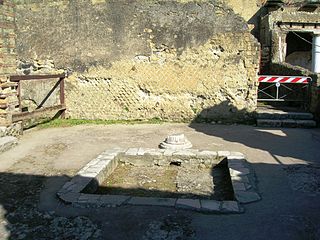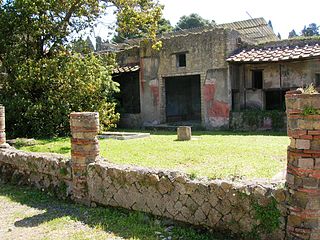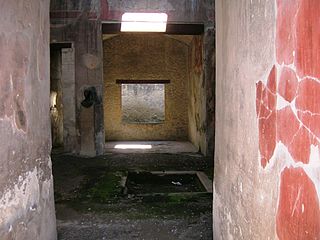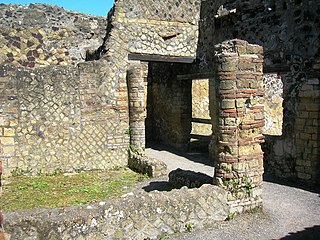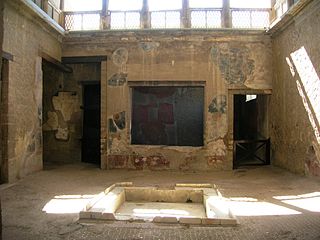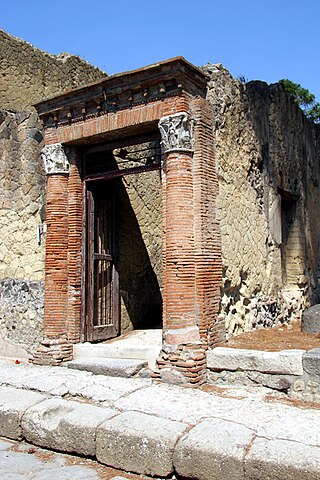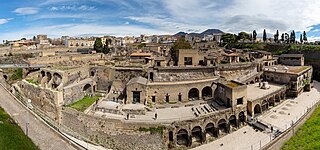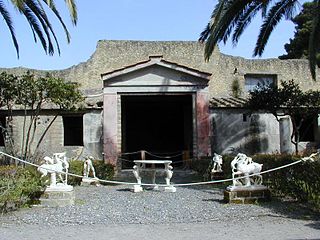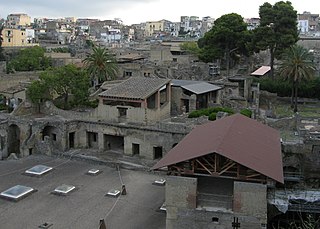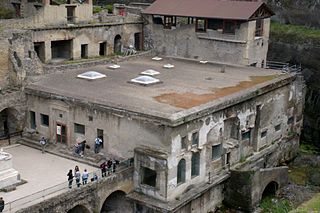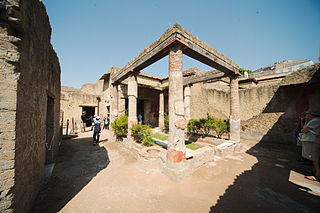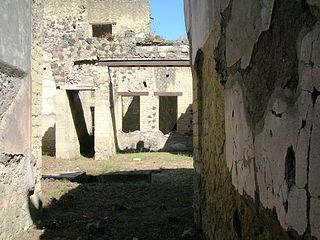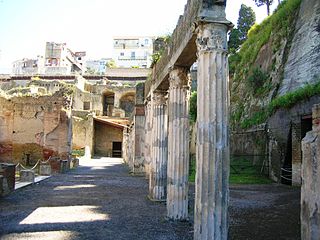Self-guided Sightseeing Tour #1 in Ercolano, Italy
Legend
Tour Facts
0.7 km
32 m
Experience Ercolano in Italy in a whole new way with our free self-guided sightseeing tour. This site not only offers you practical information and insider tips, but also a rich variety of activities and sights you shouldn't miss. Whether you love art and culture, want to explore historical sites or simply want to experience the vibrant atmosphere of a lively city - you'll find everything you need for your personal adventure here.
Activities in ErcolanoIndividual Sights in ErcolanoSight 1: House of Aristides
The house of Aristide is a Roman house, buried during the eruption of Vesuvius in 79 and found following the archaeological excavations of ancient Herculaneum.
Sight 2: House of the Mosaic Atrium
The House of the Mosaic Atrium is a Roman house, buried during the eruption of Vesuvius in 79 and found following the archaeological excavations of ancient Herculaneum: it is so called because of the atrium which has a mosaic floor.
Sight 3: House of the Bronze Herm
The House of the Bronze Herm is a Roman house, buried during the eruption of Vesuvius in 79 and found following the archaeological excavations of ancient Herculaneum: it is so called because of the discovery inside of a bronze herm depicting a man.
Sight 4: House of the Alcove
The Alcove House is a Roman house, buried during the eruption of Vesuvius in 79 and found following the archaeological excavations of ancient Herculaneum: it is so called because of an apsidal environment, called an alcove.
Sight 5: Samnite House
The Samnite House is a Roman house, buried during the eruption of Vesuvius in 79 and found following the archaeological excavations of ancient Herculaneum: it is one of the oldest houses in the city.
Sight 6: House of the Grand Portal
The house of the Great Portal is a Roman house, buried during the eruption of Vesuvius in 79 and found following the archaeological excavations of ancient Herculaneum: it is so called because of the entrance portal decorated with semi-columns with capitals adorned with Victories.
Sight 7: Herculaneum
Herculaneum is an ancient Roman town located in the modern-day comune of Ercolano, Campania, Italy. Herculaneum was buried under a massive pyroclastic flow in the eruption of Mount Vesuvius in 79 AD.
Sight 8: House of the Stags
The house of the Deer is a house from Roman times, buried during the eruption of Vesuvius in 79 and found following the archaeological excavations of ancient Herculaneum: it is so called because of the discovery, in the garden, of two statues of deer attacked by dogs.
Sight 9: House of the Gem
The House of the Gem is a Roman house, buried during the eruption of Vesuvius in 79 and brought to light following the archaeological excavations of ancient Herculaneum: it is so called because of the discovery inside of a jewel, dating back to the age of Claudius, on which Livia's face is engraved.
Sight 10: Suburban Baths
The Suburban Baths are a thermal complex from Roman times, buried by the eruption of Vesuvius in 79 and found following the archaeological excavations of ancient Herculaneum: they are one of the best preserved thermal buildings of their kind in the entire Roman Empire.
Sight 11: House of the Telephus Relief
The house of the Relief of Telephus is a Roman house, buried during the eruption of Vesuvius in 79 and brought to light following the archaeological excavations of ancient Herculaneum: it is so called because a high relief depicting the myth of Telephus was found inside.
Sight 12: House of the Corinthian Atrium
The house of the Corinthian Atrium is a house from the Roman era, buried by the eruption of Vesuvius in 79 and found following the archaeological excavations of ancient Herculaneum: it is so called because of the columns of the atrium, with a capital in the Corinthian order.
Sight 13: House of the Wooden Shrine
The house of the Wooden Sacellum is a Roman house, buried by the eruption of Vesuvius in 79 and found following the archaeological excavations of ancient Herculaneum: it owes its name to the discovery of a small wooden cabinet.
Sight 14: Palaestra
The Palestra is a sports facility, buried by the eruption of Vesuvius in 79 and found following the archaeological excavations of ancient Herculaneum.
Share
How likely are you to recommend us?
Disclaimer Please be aware of your surroundings and do not enter private property. We are not liable for any damages that occur during the tours.
GPX-Download For navigation apps and GPS devices you can download the tour as a GPX file.
